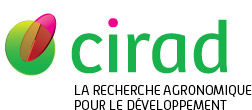Agarwal Bina, Dorin Bruno. 2019. Group farming in France: Why do some regions have more cooperative ventures than others?. Environment and Planning. A, Economy and Space, 51 (3) : 781-804.
|
Version Online first
- Anglais
Sous licence  . .
DORIN & AGARWAL, 2019 - Group Farming in France (EPA - Economy and Space).pdf Télécharger (458kB) | Prévisualisation |
|
|
Version publiée
- Anglais
Sous licence  . .
589807.pdf Télécharger (469kB) | Prévisualisation |
Quartile : Q2, Sujet : GEOGRAPHY / Quartile : Q2, Sujet : ENVIRONMENTAL STUDIES
Liste HCERES des revues (en SHS) : oui
Thème(s) HCERES des revues (en SHS) : Economie-gestion; Géographie-Aménagement-Urbanisme-Architecture
Résumé : The global debate on food security and the kinds of farming systems that could prove economically and ecologically sustainable has focused overwhelmingly on small family farms versus large commercial farms, with little attention being given to alternative models based on farmer cooperation. France offers a significant but under-researched and internationally little-recognized model of group farming – the GAEC (Groupement Agricole d'Exploitation en Commun) – based on farmers pooling land, labour and capital. This model is of considerable contemporary interest for both France and other countries. Catalysed by a 1962 law, GAECs accounted for 7.6% of farms and 15% of agricultural adult work units in 2010, but their incidence varied greatly across regions. Using data from the French agricultural census and other sources, this paper identifies the factors – economic, ecological, social and demographic – underlying this regionally uneven development of GAECs (and comparatively of EARLs – Exploitations Agricoles à Responsabilité Limitée – another type of group farm introduced in 1985). Regions with a higher incidence of group farms are found to be those that were historically dominated by middle-sized farms, had a local ecology favouring labour-intensive animal breeding, especially pastures, a higher proportion of agricultural graduates, greater economic equality and social institutions that promote community cohesion, among other factors. These results illuminate not only the conditions favourable to the emergence of group farming in France, but also the conditions under which such farmer cooperation could take root in other (including developing) countries, subject to context-specific modifications of the French model.
Mots-clés géographiques Agrovoc : France
Mots-clés libres : Group farming, Cooperation, France, GAEC, Institutional innovation, Regional variations, Collective action, Agriculture
Classification Agris : E40 - Coopératives
A01 - Agriculture - Considérations générales
B10 - Géographie
Champ stratégique Cirad : CTS 5 (2019-) - Territoires
Auteurs et affiliations
- Agarwal Bina, Université de Manchester (GBR)
-
Dorin Bruno, CIRAD-ES-UMR CIRED (FRA)
 ORCID: 0000-0002-8738-8057 - auteur correspondant
ORCID: 0000-0002-8738-8057 - auteur correspondant
Source : Cirad-Agritrop (https://agritrop.cirad.fr/589807/)
[ Page générée et mise en cache le 2025-09-07 ]




